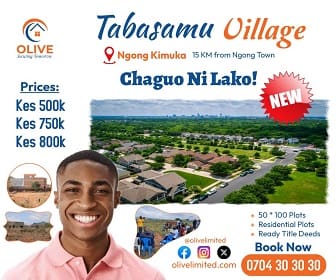An overwhelming majority of those who think Uhuru Kenyatta should be president want him to keep William Ruto as his running mate while most of those who favour Raila Odinga want him to keep Kalonzo Musyoka as his running mate.
This would result in the August election being a rematch of the 2013 election.
This week Ipsos released a poll showing 47 percent of Kenyans would vote for Uhuru for President if elections were held to today, compared 30 percent for Raila Odinga. This was a narrower lead than Uhuru had over Raila for most of 2016.
Of those saying they would vote for Uhuru, 85 percent want him to keep Deputy President William Ruto as his running mate.
Of those saying they would vote for Raila, 53 percent want him to keep Wiper leader Kalonzo Musyoka as his running mate while 24 percent thought that Musalia Mudavadi should be the running mate.
Around 8 percent of Raila supporters thought that Ford Kenya leader and Bungoma senator Moses Wetangula would be his best running mate, and then three percent said Mombasa Governor Ali Hassan Joho.
Between January 9 and 26, Ipsos interviewed 2,057 Kenyans aged 18 and above, spread across urban and rural areas in 42 counties. Questions were asked face-to-face in English, Kiswahili and Somali. The margin of error was +/- 2.15 with a 95 per cent confidence level.
Respondents were asked their choice of presidential candidate and then asked which of several possible running mates they would prefer.
Jubilee has announced its UhuRuto ticket for August election but the opposition National Super Alliance has not yet decided who should be the candidate and the running mate. A technical team will aid the selection. NASA’s announcement is expected in March but the deadline is May 28.
On Wednesday, the four main opposition parties (ODM, Wiper, Ford Kenya and ANC) signed a unity agreement and pledged select a joint candidate. Each wants to field the presidential flagbearer.
However only Raila and Uhuru have support in double figures. Kalonzo is preferred by six percent of respondents and ANC’s Mudavadi by three percent.
Just one percent preferred Ruto and fewer than one percent preferred Wetang’ula.
Among Uhuru supports, the next suggested running mate for Uhuru after Ruto is Kalonzo at a distant three percent, with Mudavadi and Raila following at two percent each.
Interestingly of those said Mudavadi was their preferred presidential candidate, 43 percent prefer Kalonzo as his running mate compared Raila at 18 per cent.
Another 10 percent of Mudavadi supporters thought he should team up with Wetang’ula. Both come from the same community in Western.
However how will these expressed preferences change once NASA formally announces its candidate and running mate?
More specifically, how successful will those who are not on the ticket be in convincing their supporters to shift their loyalty and their votes to o NASA’s actual flagbearers?
The election is a game of numbers and the opposition believes it has enough to tilt the ‘tyranny of numbers’ in its favour.
Running mates are therefore key in the presidential race due to the largely regional-ethnic nature of Kenyan politics.
In 2013, Uhuru and Ruto paired up and won due to the larger number of registered voters in Uhuru’s Mt Kenya and Ruto’s Rift Valley.
Of the 19.74 million registered voters today, 10.54 million are in former provinces of Central, Rift Valley and Eastern.
However the Eastern population is split almost in half between the eastern side of Mt Kenya and lower Ukambani.
Ukambani is Kalonzo’s turf and this is what Raila counted on in 2013 to boost his votes from Nyanza and Western. Raila also had overwhelming support from the Coast, though the pair still lost narrowly to UhuRuto.
So the question is: if Raila is not on the ticket, even as running mate, but vigorously supports his opposition flagbearers, how many of his supporters will heed his call and vote for them? The same question applies to the other three NASA principals.
In 2013, 12,330,028 Kenyans, representing 86 per cent of registered voters, cast ballots.
Uhuru was declared winner with 6,173,433 votes, 50.5 per cent of the total. Raila came second with 5,340,546 (43.7 per cent).
The two sides appear to believe 13 swing-vote counties with about five million voters will decide the election.
The Ipsos poll shows today Uhuru has a majority in Central (86 percent), Rift Valley (62 percent) and North Eastern (62 percent). In those areas Raila gets five percent, 20 percent and 14 percent respectively.
Raila’s highest support is in Nyanza (73 percent) and Coast (46 percent), with Uhuru getting 16 percent and 26 percent respectively.
The two would appear to divide the spoils in Nairobi where Raila has a marginal lead of six percent.
Uhuru gets 44 per cent in Eastern, followed by Kalonzo at 34 per cent, with Raila managing 13 per cent.
In Western, perceived to be Mudavadi’s bedrock, Raila leads with 36 per cent, followed by Uhuru at 24 per cent and Mudavadi at 13 per cent
Ipsos points out, however, these figures should not be taken too seriously until Kenyans know who’s on the opposition ticket.
Yesterday Philip Etale, ODM Director of Communications, wrote an opinion piece in the Star claiming that Nasa now had 7,797,049 registered voters compared to 7,203,214 for Jubilee.
Source link-the-star.co.ke









